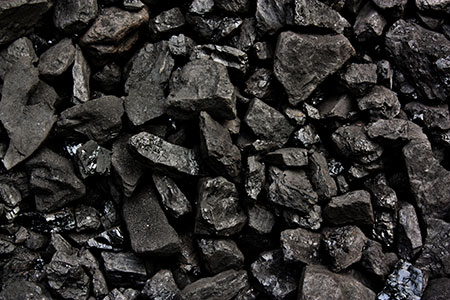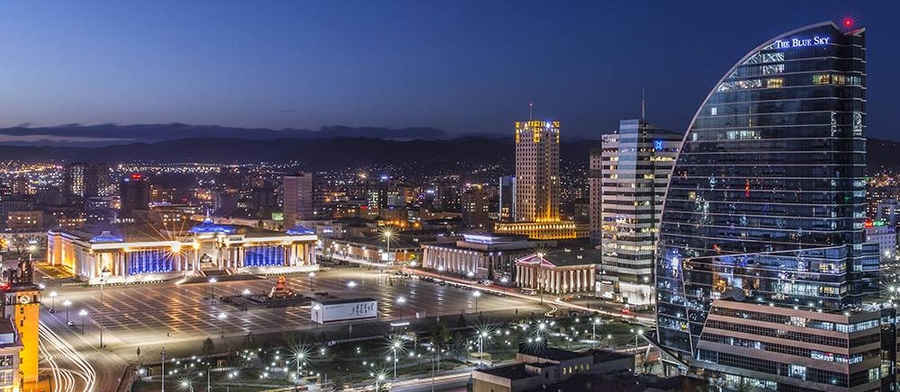Events
| Name | organizer | Where |
|---|---|---|
| MBCC “Doing Business with Mongolia seminar and Christmas Receptiom” Dec 10. 2025 London UK | MBCCI | London UK Goodman LLC |
NEWS

Pakistan’s wrestlers to train in Mongolia ahead of the Asian Championship www.news.mn
Pakistan’s premier wrestler Mohammad Inam sees the 15-day training with the Asian wrestlers ahead of the Asian Championship in Mongolia.
“This is a big opportunity for us ahead of the Commonwealth Games to feature in an event and before that to train for 15 days in Mongolia with the Asian wrestlers. It will exactly tell us where we stand now in mat wrestling and on which areas we will have to work ahead of the Commonwealth Games. So it will be very helpful for us,” Inam told ‘The News’. “It will be a learning period for us and we will try to learn more and then feature in the Asian event,” Inam added.
Inam and the Youth Olympics bronze medallist Inayatullah along with their coach Ghulam Fareed will were scheduled to fly out of Lahore for Mongolia in the wee hours of Wednesday (today) to undergo a 15-day training before featuring in the Asian Championship pencilled in for April 19-24 in Ulaanbaatar, Mongolia.
However, wrestler Mohammad Bilal will leave on April 19 to only feature in the Asian Championship in 57 kilogramme.

Mongolia adds 81 new COVID-19 infections www.xinhuanet.com
April 5 (Xinhua) -- Mongolia reported 81 new COVID-19 local cases over the past 24 hours, bringing the national count to 469,831, according to a statement by the country's health ministry on Tuesday.
Meanwhile, no new deaths from COVID-19 were reported in the past day, and the country's death toll has remained unchanged at 2,108.
Mongolians have basically returned to normal life due to high vaccination coverage and declining daily infections. The country has resumed in-person classes for all levels of educational institutions and fully opened its borders to foreign tourists, who will not be required to have a polymerase chain reaction (PCR) test or to be quarantined.
So far, 66.8 percent of the country's total population of 3.4 million has received two COVID-19 vaccine doses, 1,033,333 people have received a third dose, and 115,765 have received a fourth dose voluntarily.

Almost everyone now breathing polluted air, warns WHO www.news.un.org
Noting that fossil fuels are responsible for most of the harmful emissions that are linked to acute and chronic sickness, the World Health Organization (WHO) called for tangible steps to curb their use.
The UN agency also urged more governments to take note that it has made significant revisions to its air quality indicators, including for particulate matter - known as PM2.5 - that can enter the bloodstream, along with nitrogen dioxide (NO2), another common urban pollutant and precursor of particulate matter and ozone.
Lower level
“It has been recognised that air pollution has an impact at a much lower level than previously thought,” said Dr. Sophie Gumy, Technical Officer at WHO’s Department of Environment, Climate Change and Health.
“So, with all the new evidence that has come up over the last 15 years since the last WHO air quality guideline update, most of the values of the guidelines levels have been reduced. So (for) particulate matter it has been reduced by two, and for nitrogen dioxide it has been reduced by four.”
According to the WHO, low and middle-income countries still experience greater exposure to unhealthy levels of particulate matter compared to the global average, but nitrogen dioxide patterns “are different, showing less difference between high and low and middle-income countries”.
Invisible danger
The agency’s data indicates that 4.2 million people die from exposure to outdoor air pollution, in addition to the 3.8 million whose deaths are linked to household smoke produced by dirty stoves and fuels.
And based on WHO’s mathematical modelling of available air pollution data from 80 per cent of the world’s urban areas, it indicates that almost every one of us faces an increased risk of heart disease, stroke, lung disease, cancer and pneumonia.
As depressing and as dangerous as this situation is, the UN health agency insists that momentum has been growing for better air quality everywhere in the last decade.
Proof of this is the fact that more than 6,000 cities in 117 countries now monitor air quality, compared to 1,100 cities in 91 countries a decade ago.
Achieving cleaner air is also one of the 17 Sustainable Development Goals, and an increasing number of UN agencies have passed resolutions urging Member States to address the health impacts of smog-filled air.
Welcoming the increasing number of cities that have begun to measure air quality for the first time, Dr. Maria Neira, Director, WHO Department of Environment, Climate Change and Health, said that it was particularly significant that data is also being gathered on nitrogen dioxide.
NO2 “is a proxy indicator for traffic and it's telling us what is happening at urban level and how this gas that we know that is so damaging and causing so many of respiratory diseases - one of them being asthma - is increasing in many cities around the world.”
Despite this progress, “the bad news is that we still have a majority of cities who do not comply with the air quality guidelines,” said Dr. Gumy. “The people living in them are still breathing unhealthy levels of fine particulate matter and nitrogen dioxide, with people in low and middle-income countries suffering the highest exposures.”
Hot data
Released ahead of World Health Day on 7 April, the 2022 update of the World Health Organization’s air quality database includes for the first time ground measurements of nitrogen dioxide (NO2) and particulate matter with diameters equal or smaller than 10 microns (PM10) or 2.5 microns (PM2.5). Both groups of pollutants originate mainly from human activities related to fossil fuel combustion.
The new air quality database is the most extensive yet in its coverage of air pollution exposure on the ground, WHO says. Some 2,000 more cities/human settlements now record ground monitoring data for particulate matter, PM10 and/or PM2.5, than the last update. This marks an almost six-fold rise in reporting since the database launched in 2011.

MoU signed on extending Chevening Scholarship www.montsame.mn
A Memorandum of Understanding was signed between the Ministry of Education and Science and the Embassy of the United Kingdom in Mongolia to extend the Chevening Scholarship Program.
During the signing ceremony, Minister L.Enkh-Amgalan stressed the need to increase the number of students studying in the UK in order to achieve the Government of Mongolia’s goal of training experts in developed countries.
The Minister also noted that the scholarship program is one of the largest investments in Mongolia’s education sector by the UK.
Since 1993 over 180 Mongolians studied in the UK with the scholarship and MoU with the Mongolian Government was first signed in 2013 to increase the number of students.

US coal prices top $100/t for first time since 2008 www.bloomberg.com
U.S. coal prices topped $100 a ton for the first time in 13 years as Russia’s war in Ukraine upends international energy markets and an economic rebound from the pandemic drives up demand for fossil fuels.
Prices for coal from Central Appalachia surged 9% to $106.15 a ton last week, the highest since late 2008, according to government data released Monday. Prices in the Illinois Basin rose to $109.55, topping $100 for the first time in records dating to 2005.
The surge matches increases around the world as the Ukraine war prompts users to seek alternatives to Russian coal, which accounted for almost 18% of global exports in 2020. That’s exacerbating a surge in demand that began last year as a global economic recovery from pandemic drove up electricity consumption.
“The energy fallout from Russia’s invasion of Ukraine could last for a while,” Michelle Bloodworth, chief executive officer of America’s Power, a coal-power trade group, said in an interview. “Coal is going to be needed for the foreseeable future.”
While U.S. power producers have been shifting away from coal, consumption actually climbed last year as prices also increased for natural gas. More costly fossil fuels come as U.S. consumers already face the highest inflation in four decades. Americans are paying higher utility bills, food prices are surging and housing costs are up.
Prices in Central Appalachia and the Illinois basin are rising more than in other U.S. coal-producing regions because they have easier access to international markets. U.S. exports climbed 23% last year and are expected to increase another 3.3% this year as miners take advantage of record international prices.
The rebound in coal comes as a United Nations-backed panel of climate scientists warned Monday that the world may be on track to warm at a pace that would painfully remake societies and life on the planet.
(By Will Wade)

Metals world agonizes over war but keeps buying from Russia www.bloomberg.com
Last month, 13 copper-industry representatives at the London Metal Exchange were asked whether Russian metal should be blocked from its warehouses. Ten of them said “yes.” But when advisory groups for nickel and aluminum discussed the same question, the general consensus was “no.”
The LME, which is the ultimate decision-maker, says it won’t take action that goes beyond government sanctions — which, so far, have left most of the metals industry untouched.
But the behind-closed-doors discussions reflect a wider angst over whether to keep buying from Russia, as the industry weighs the stigma from the war against its own commercial interests — and the fact that vital metals like aluminum and copper were in short supply even before the invasion of Ukraine.
For now, Russian metal is largely still flowing to the world’s factories and building sites. Many traders and fabricators who buy from Russian companies are tied in to pre-existing purchase deals that can extend over years. And commodities merchants have a well-earned reputation as buyers and financiers of last resort when others have long backed away.
Still, a growing number in the industry say they won’t take on new Russian business, and some are actively working to disentangle themselves. That’s making it ever-harder for Russia’s metals producers to sell whatever output is not already contracted, and may ultimately force them to cut production if there’s no change by the time long-term deals come to an end.
For the LME, the risk is that material mined in Russia starts piling up in its warehouses because it has nowhere else to go, creating dangerous dislocations at the nexus of the global metals trade.
“We see from our customer base there is hardly any interest to buy Russian metal if they can avoid it — and they can,” said Roland Harings, chief executive officer of copper giant Aurubis AG, which is represented on the LME copper committee. If the metal flows to the LME instead, “then you have this phantom stock which has an influence on the market because it shows high stock levels but nobody wants it.”
The question of what happens to Russia’s metal exports is of vast consequence to global markets — it’s a key supplier of palladium, nickel, aluminum, steel and copper. Prices for all of those metals set new all-time highs in March, although steel is the only one to be the direct target of sanctions so far.
Aurubis, Europe’s largest copper smelter, is “trying to get out” of its contracts for Russian supplies, and is in favor of sanctions against metals, Harings said in an interview last week. “I believe in the end whatever money we pay will end up in the wrong pockets,” he said.
Norwegian aluminum company Norsk Hydro ASA said it was taking the minimum possible under its contracts with Russian companies and was aiming to reduce that further.
There are still buyers for now — even in Europe. Russian metals producers like MMC Norilsk Nickel PJSC and United Co. Rusal International PJSC tend to sell on annual or multi-annual deals to big industrial groups, and for the most part these contracts are still being fulfilled, according to people familiar with the matter.
Traders like Glencore Plc, which has a deal to buy aluminum from Rusal until at least 2024, and Trafigura Group, which has a long-standing relationship with Nornickel, are also fulfilling contracts in Russia.
Still, there are big challenges. Most container shipping lines have stopped calling at Russian ports. Precious metals like gold and palladium are typically sent to Switzerland or London by plane — but most flights out of Russia are now grounded.
And few new deals are happening. Glencore, which has been one of the largest traders of Russian commodities since the days when founder Marc Rich struck agreements with the Soviet Union, announced last week it would do no new business in Russia.
Traders say it’s nearly impossible to find banks willing to finance new purchases of Russian metals, even in China, the world’s biggest metals consumer.
That’s where the debate over the LME comes in.
Producers generally prefer to sell their metal to end users, but delivering onto the exchange is also an option. Buyers on the LME don’t know whose metal they will receive until the contracts expire.
Those arguing for a ban on Russian metal say there’s a risk that the country’s producers could dump large volumes of metal into LME warehouses to raise cash quickly. If it became clear that LME stocks were dominated by Russian metal that no one wants, the exchange’s contracts could be priced differently from the rest of the global market.
Already, Trafigura has been delivering Russian copper to LME warehouses in Asia in recent days after failing to sell it in China, Bloomberg reported.
The two copper committee members who voted against a ban — representatives of China’s Minmetals and IXM, a trading house owned by China Molybdenum Co. — argued that it wasn’t the LME’s place to impose sanctions, and that doing so would disrupt an already febrile market. A third, from French cable maker Nexans SA, abstained, according to people familiar with the matter.
The LME committees only have an advisory role. But the exchange is also wrestling with the issue: Chief Executive Matthew Chamberlain told Bloomberg TV the LME wanted to make sure it “can’t be part of financing any type of atrocity,” and was in talks with governments.
The LME has said it will not impose restrictions on Russian metal that go beyond government sanctions. Still, any move by the U.S., U.K. or EU to target Russian metal flows would probably lead the exchange to block new deliveries.
On Friday, the LME made the largely symbolic decision to ban deliveries of newly exported Russian aluminum, copper and lead from its warehouses in the U.K., in response to a new import duty imposed by the U.K. government.
“The western world is going to have to work out ways of using less Russian metal,” said Duncan Hobbs, research director at metals trader Concord Resources Ltd. “We will see some redistribution of trade flows as a result of what has happened, even if the fighting stops tomorrow.”
(By Jack Farchy, Mark Burton and James Attwood, with assistance from Jessica Zhou)

Mongolia-India direct flight to be conducted from this summer www.montsame.mn
Mongolia-India strategic partnership and cooperation will make various advancements and achievements this year, highlighted Ambassador Extraordinary and Plenipotentiary of the Republic of India to Mongolia M.P.Singh.
During the business meeting organized on expanding Mongolia-India cooperation in trade, technology, and tourism, the Ambassador also noted that construction projects are being implemented on an oil refinery as well as an education and outsourcing center on IT and cyber security, with soft loan from the Government of India.
Underlining that the oil refinery is a core pillar for bilateral cooperation and strategic partnership, he then said that the project is considered to be of great significance as it allows Mongolia to become energy independent. The project is being financed with a soft loan of USD 1.3 billion.
During the meeting, it was also announced that direct flights between Mongolia and India are planned to begin to be conducted by Hunnu Air airline from this summer. With the availability of direct flights, it will become possible to directly discuss and expand cooperation in various sectors such as tourism, religion, education, and IT.
For the field of IT, construction works have kicked off for an IT Education and Outsourcing Center. The project is being implemented with a soft loan of USD 20 million from the Government of India. Mongolian students will be prepared in 16 specializations at the center, which is planned to be established under the Mongolian University of Science and Technology.
Furthermore, a cyber security training center will be established at the Ministry of Defense. A project on preparing 1,000 English teachers in Mongolia and India have also been recently launched.
During the meeting, participants also noted the opportunities for bilateral cooperation in film production.
The business meeting was attended by Head of Chancery at the Embassy of India Sanjeev Kumar, Former Ambassador of Mongolia to India J.Ganbold, executives of Mongolian National Chamber of Commerce and Industry, and representatives of India-Mongolia Business Council as well as entities and business owners.

Mongolia to provide USD 200 thousand in humanitarian assistance to Ukraine www.montsame.mn
At its irregular meeting held today, the Cabinet resolved to provide USD 200 thousand as humanitarian assistance to Ukraine.
USD 150 thousand of the assistance, which will be allocated from the Government’s reserve fund, will be provided to Ukraine through UN Crisis Relief and the rest will be transferred via International Red Cross and Red Crescent Societies, reported Spokeswoman of the Prime Minister Ch.Bolortuya.

Mongolia's active COVID-19 cases drop below 1,000 first time since late 2020 www.xinhuanet.com
April 4 (Xinhua) -- The number of active COVID-19 cases in Mongolia has dropped below 1,000 for the first time since Dec. 22, 2020, the country's health ministry reported on Monday.
The number of active cases in the Asian country stood at 971 after 81 new local infections were reported in the past day, the ministry said in a statement.
Meanwhile, no new related deaths were reported in the past day, and the death toll from COVID-19 has remained unchanged at 2,108 in the country.
Mongolians have basically returned to everyday life due to high vaccination coverage and declining daily infections. Notably, the country has resumed in-person classes for all levels of educational institutions and fully opened its borders to foreign tourists, who will not be required to have a polymerase chain reaction (PCR) test or to be quarantined.
So far, 66.8 percent of the country's total population of 3.4 million has received two COVID-19 vaccine doses, 1,032,876 people have received a third dose, and 115,185 have received a fourth dose voluntarily.

2nd meeting of Mongolia-Poland intergovernmental commission takes place www.montsame.mn
The 2nd meeting of the Mongolia-Poland intergovernmental commission on Economic Cooperation was held virtually on March 31.
The meeting was chaired by B.Munkhbaatar, Minister of Construction and Urban Development of Mongolia, and Grzegorz Piechowiak, Secretary of State in the Ministry of Economic Development and Technology of Poland.
During the parties agreed to intensify the implementation of the projects, which were agreed to be realized by Poland’s soft loan, such as the establishment of a solid waste treatment plant in Erdenet city, expansion of wastewater treatment plants in 5 aimags, supply of special equipment and vehicles for mobile medical care in rural areas as well as the development of vegetable production and value chains.
Moreover, the parties also discussed issues on the expansion of bilateral cooperation in the fields of e-governance, IT, auto road transport, geology, agriculture, veterinary medicine, light industry, culture, archeology, tourism, social protection and health, and signed a Protocol.
- «
- 1
- 2
- 3
- 4
- 5
- 6
- 7
- 8
- 9
- 10
- 11
- 12
- 13
- 14
- 15
- 16
- 17
- 18
- 19
- 20
- 21
- 22
- 23
- 24
- 25
- 26
- 27
- 28
- 29
- 30
- 31
- 32
- 33
- 34
- 35
- 36
- 37
- 38
- 39
- 40
- 41
- 42
- 43
- 44
- 45
- 46
- 47
- 48
- 49
- 50
- 51
- 52
- 53
- 54
- 55
- 56
- 57
- 58
- 59
- 60
- 61
- 62
- 63
- 64
- 65
- 66
- 67
- 68
- 69
- 70
- 71
- 72
- 73
- 74
- 75
- 76
- 77
- 78
- 79
- 80
- 81
- 82
- 83
- 84
- 85
- 86
- 87
- 88
- 89
- 90
- 91
- 92
- 93
- 94
- 95
- 96
- 97
- 98
- 99
- 100
- 101
- 102
- 103
- 104
- 105
- 106
- 107
- 108
- 109
- 110
- 111
- 112
- 113
- 114
- 115
- 116
- 117
- 118
- 119
- 120
- 121
- 122
- 123
- 124
- 125
- 126
- 127
- 128
- 129
- 130
- 131
- 132
- 133
- 134
- 135
- 136
- 137
- 138
- 139
- 140
- 141
- 142
- 143
- 144
- 145
- 146
- 147
- 148
- 149
- 150
- 151
- 152
- 153
- 154
- 155
- 156
- 157
- 158
- 159
- 160
- 161
- 162
- 163
- 164
- 165
- 166
- 167
- 168
- 169
- 170
- 171
- 172
- 173
- 174
- 175
- 176
- 177
- 178
- 179
- 180
- 181
- 182
- 183
- 184
- 185
- 186
- 187
- 188
- 189
- 190
- 191
- 192
- 193
- 194
- 195
- 196
- 197
- 198
- 199
- 200
- 201
- 202
- 203
- 204
- 205
- 206
- 207
- 208
- 209
- 210
- 211
- 212
- 213
- 214
- 215
- 216
- 217
- 218
- 219
- 220
- 221
- 222
- 223
- 224
- 225
- 226
- 227
- 228
- 229
- 230
- 231
- 232
- 233
- 234
- 235
- 236
- 237
- 238
- 239
- 240
- 241
- 242
- 243
- 244
- 245
- 246
- 247
- 248
- 249
- 250
- 251
- 252
- 253
- 254
- 255
- 256
- 257
- 258
- 259
- 260
- 261
- 262
- 263
- 264
- 265
- 266
- 267
- 268
- 269
- 270
- 271
- 272
- 273
- 274
- 275
- 276
- 277
- 278
- 279
- 280
- 281
- 282
- 283
- 284
- 285
- 286
- 287
- 288
- 289
- 290
- 291
- 292
- 293
- 294
- 295
- 296
- 297
- 298
- 299
- 300
- 301
- 302
- 303
- 304
- 305
- 306
- 307
- 308
- 309
- 310
- 311
- 312
- 313
- 314
- 315
- 316
- 317
- 318
- 319
- 320
- 321
- 322
- 323
- 324
- 325
- 326
- 327
- 328
- 329
- 330
- 331
- 332
- 333
- 334
- 335
- 336
- 337
- 338
- 339
- 340
- 341
- 342
- 343
- 344
- 345
- 346
- 347
- 348
- 349
- 350
- 351
- 352
- 353
- 354
- 355
- 356
- 357
- 358
- 359
- 360
- 361
- 362
- 363
- 364
- 365
- 366
- 367
- 368
- 369
- 370
- 371
- 372
- 373
- 374
- 375
- 376
- 377
- 378
- 379
- 380
- 381
- 382
- 383
- 384
- 385
- 386
- 387
- 388
- 389
- 390
- 391
- 392
- 393
- 394
- 395
- 396
- 397
- 398
- 399
- 400
- 401
- 402
- 403
- 404
- 405
- 406
- 407
- 408
- 409
- 410
- 411
- 412
- 413
- 414
- 415
- 416
- 417
- 418
- 419
- 420
- 421
- 422
- 423
- 424
- 425
- 426
- 427
- 428
- 429
- 430
- 431
- 432
- 433
- 434
- 435
- 436
- 437
- 438
- 439
- 440
- 441
- 442
- 443
- 444
- 445
- 446
- 447
- 448
- 449
- 450
- 451
- 452
- 453
- 454
- 455
- 456
- 457
- 458
- 459
- 460
- 461
- 462
- 463
- 464
- 465
- 466
- 467
- 468
- 469
- 470
- 471
- 472
- 473
- 474
- 475
- 476
- 477
- 478
- 479
- 480
- 481
- 482
- 483
- 484
- 485
- 486
- 487
- 488
- 489
- 490
- 491
- 492
- 493
- 494
- 495
- 496
- 497
- 498
- 499
- 500
- 501
- 502
- 503
- 504
- 505
- 506
- 507
- 508
- 509
- 510
- 511
- 512
- 513
- 514
- 515
- 516
- 517
- 518
- 519
- 520
- 521
- 522
- 523
- 524
- 525
- 526
- 527
- 528
- 529
- 530
- 531
- 532
- 533
- 534
- 535
- 536
- 537
- 538
- 539
- 540
- 541
- 542
- 543
- 544
- 545
- 546
- 547
- 548
- 549
- 550
- 551
- 552
- 553
- 554
- 555
- 556
- 557
- 558
- 559
- 560
- 561
- 562
- 563
- 564
- 565
- 566
- 567
- 568
- 569
- 570
- 571
- 572
- 573
- 574
- 575
- 576
- 577
- 578
- 579
- 580
- 581
- 582
- 583
- 584
- 585
- 586
- 587
- 588
- 589
- 590
- 591
- 592
- 593
- 594
- 595
- 596
- 597
- 598
- 599
- 600
- 601
- 602
- 603
- 604
- 605
- 606
- 607
- 608
- 609
- 610
- 611
- 612
- 613
- 614
- 615
- 616
- 617
- 618
- 619
- 620
- 621
- 622
- 623
- 624
- 625
- 626
- 627
- 628
- 629
- 630
- 631
- 632
- 633
- 634
- 635
- 636
- 637
- 638
- 639
- 640
- 641
- 642
- 643
- 644
- 645
- 646
- 647
- 648
- 649
- 650
- 651
- 652
- 653
- 654
- 655
- 656
- 657
- 658
- 659
- 660
- 661
- 662
- 663
- 664
- 665
- 666
- 667
- 668
- 669
- 670
- 671
- 672
- 673
- 674
- 675
- 676
- 677
- 678
- 679
- 680
- 681
- 682
- 683
- 684
- 685
- 686
- 687
- 688
- 689
- 690
- 691
- 692
- 693
- 694
- 695
- 696
- 697
- 698
- 699
- 700
- 701
- 702
- 703
- 704
- 705
- 706
- 707
- 708
- 709
- 710
- 711
- 712
- 713
- 714
- 715
- 716
- 717
- 718
- 719
- 720
- 721
- 722
- 723
- 724
- 725
- 726
- 727
- 728
- 729
- 730
- 731
- 732
- 733
- 734
- 735
- 736
- 737
- 738
- 739
- 740
- 741
- 742
- 743
- 744
- 745
- 746
- 747
- 748
- 749
- 750
- 751
- 752
- 753
- 754
- 755
- 756
- 757
- 758
- 759
- 760
- 761
- 762
- 763
- 764
- 765
- 766
- 767
- 768
- 769
- 770
- 771
- 772
- 773
- 774
- 775
- 776
- 777
- 778
- 779
- 780
- 781
- 782
- 783
- 784
- 785
- 786
- 787
- 788
- 789
- 790
- 791
- 792
- 793
- 794
- 795
- 796
- 797
- 798
- 799
- 800
- 801
- 802
- 803
- 804
- 805
- 806
- 807
- 808
- 809
- 810
- 811
- 812
- 813
- 814
- 815
- 816
- 817
- 818
- 819
- 820
- 821
- 822
- 823
- 824
- 825
- 826
- 827
- 828
- 829
- 830
- 831
- 832
- 833
- 834
- 835
- 836
- 837
- 838
- 839
- 840
- 841
- 842
- 843
- 844
- 845
- 846
- 847
- 848
- 849
- 850
- 851
- 852
- 853
- 854
- 855
- 856
- 857
- 858
- 859
- 860
- 861
- 862
- 863
- 864
- 865
- 866
- 867
- 868
- 869
- 870
- 871
- 872
- 873
- 874
- 875
- 876
- 877
- 878
- 879
- 880
- 881
- 882
- 883
- 884
- 885
- 886
- 887
- 888
- 889
- 890
- 891
- 892
- 893
- 894
- 895
- 896
- 897
- 898
- 899
- 900
- 901
- 902
- 903
- 904
- 905
- 906
- 907
- 908
- 909
- 910
- 911
- 912
- 913
- 914
- 915
- 916
- 917
- 918
- 919
- 920
- 921
- 922
- 923
- 924
- 925
- 926
- 927
- 928
- 929
- 930
- 931
- 932
- 933
- 934
- 935
- 936
- 937
- 938
- 939
- 940
- 941
- 942
- 943
- 944
- 945
- 946
- 947
- 948
- 949
- 950
- 951
- 952
- 953
- 954
- 955
- 956
- 957
- 958
- 959
- 960
- 961
- 962
- 963
- 964
- 965
- 966
- 967
- 968
- 969
- 970
- 971
- 972
- 973
- 974
- 975
- 976
- 977
- 978
- 979
- 980
- 981
- 982
- 983
- 984
- 985
- 986
- 987
- 988
- 989
- 990
- 991
- 992
- 993
- 994
- 995
- 996
- 997
- 998
- 999
- 1000
- 1001
- 1002
- 1003
- 1004
- 1005
- 1006
- 1007
- 1008
- 1009
- 1010
- 1011
- 1012
- 1013
- 1014
- 1015
- 1016
- 1017
- 1018
- 1019
- 1020
- 1021
- 1022
- 1023
- 1024
- 1025
- 1026
- 1027
- 1028
- 1029
- 1030
- 1031
- 1032
- 1033
- 1034
- 1035
- 1036
- 1037
- 1038
- 1039
- 1040
- 1041
- 1042
- 1043
- 1044
- 1045
- 1046
- 1047
- 1048
- 1049
- 1050
- 1051
- 1052
- 1053
- 1054
- 1055
- 1056
- 1057
- 1058
- 1059
- 1060
- 1061
- 1062
- 1063
- 1064
- 1065
- 1066
- 1067
- 1068
- 1069
- 1070
- 1071
- 1072
- 1073
- 1074
- 1075
- 1076
- 1077
- 1078
- 1079
- 1080
- 1081
- 1082
- 1083
- 1084
- 1085
- 1086
- 1087
- 1088
- 1089
- 1090
- 1091
- 1092
- 1093
- 1094
- 1095
- 1096
- 1097
- 1098
- 1099
- 1100
- 1101
- 1102
- 1103
- 1104
- 1105
- 1106
- 1107
- 1108
- 1109
- 1110
- 1111
- 1112
- 1113
- 1114
- 1115
- 1116
- 1117
- 1118
- 1119
- 1120
- 1121
- 1122
- 1123
- 1124
- 1125
- 1126
- 1127
- 1128
- 1129
- 1130
- 1131
- 1132
- 1133
- 1134
- 1135
- 1136
- 1137
- 1138
- 1139
- 1140
- 1141
- 1142
- 1143
- 1144
- 1145
- 1146
- 1147
- 1148
- 1149
- 1150
- 1151
- 1152
- 1153
- 1154
- 1155
- 1156
- 1157
- 1158
- 1159
- 1160
- 1161
- 1162
- 1163
- 1164
- 1165
- 1166
- 1167
- 1168
- 1169
- 1170
- 1171
- 1172
- 1173
- 1174
- 1175
- 1176
- 1177
- 1178
- 1179
- 1180
- 1181
- 1182
- 1183
- 1184
- 1185
- 1186
- 1187
- 1188
- 1189
- 1190
- 1191
- 1192
- 1193
- 1194
- 1195
- 1196
- 1197
- 1198
- 1199
- 1200
- 1201
- 1202
- 1203
- 1204
- 1205
- 1206
- 1207
- 1208
- 1209
- 1210
- 1211
- 1212
- 1213
- 1214
- 1215
- 1216
- 1217
- 1218
- 1219
- 1220
- 1221
- 1222
- 1223
- 1224
- 1225
- 1226
- 1227
- 1228
- 1229
- 1230
- 1231
- 1232
- 1233
- 1234
- 1235
- 1236
- 1237
- 1238
- 1239
- 1240
- 1241
- 1242
- 1243
- 1244
- 1245
- 1246
- 1247
- 1248
- 1249
- 1250
- 1251
- 1252
- 1253
- 1254
- 1255
- 1256
- 1257
- 1258
- 1259
- 1260
- 1261
- 1262
- 1263
- 1264
- 1265
- 1266
- 1267
- 1268
- 1269
- 1270
- 1271
- 1272
- 1273
- 1274
- 1275
- 1276
- 1277
- 1278
- 1279
- 1280
- 1281
- 1282
- 1283
- 1284
- 1285
- 1286
- 1287
- 1288
- 1289
- 1290
- 1291
- 1292
- 1293
- 1294
- 1295
- 1296
- 1297
- 1298
- 1299
- 1300
- 1301
- 1302
- 1303
- 1304
- 1305
- 1306
- 1307
- 1308
- 1309
- 1310
- 1311
- 1312
- 1313
- 1314
- 1315
- 1316
- 1317
- 1318
- 1319
- 1320
- 1321
- 1322
- 1323
- 1324
- 1325
- 1326
- 1327
- 1328
- 1329
- 1330
- 1331
- 1332
- 1333
- 1334
- 1335
- 1336
- 1337
- 1338
- 1339
- 1340
- 1341
- 1342
- 1343
- 1344
- 1345
- 1346
- 1347
- 1348
- 1349
- 1350
- 1351
- 1352
- 1353
- 1354
- 1355
- 1356
- 1357
- 1358
- 1359
- 1360
- 1361
- 1362
- 1363
- 1364
- 1365
- 1366
- 1367
- 1368
- 1369
- 1370
- 1371
- 1372
- 1373
- 1374
- 1375
- 1376
- 1377
- 1378
- 1379
- 1380
- 1381
- 1382
- 1383
- 1384
- 1385
- 1386
- 1387
- 1388
- 1389
- 1390
- 1391
- 1392
- 1393
- 1394
- 1395
- 1396
- 1397
- 1398
- 1399
- 1400
- 1401
- 1402
- 1403
- 1404
- 1405
- 1406
- 1407
- 1408
- 1409
- 1410
- 1411
- 1412
- 1413
- 1414
- 1415
- 1416
- 1417
- 1418
- 1419
- 1420
- 1421
- 1422
- 1423
- 1424
- 1425
- 1426
- 1427
- 1428
- 1429
- 1430
- 1431
- 1432
- 1433
- 1434
- 1435
- 1436
- 1437
- 1438
- 1439
- 1440
- 1441
- 1442
- 1443
- 1444
- 1445
- 1446
- 1447
- 1448
- 1449
- 1450
- 1451
- 1452
- 1453
- 1454
- 1455
- 1456
- 1457
- 1458
- 1459
- 1460
- 1461
- 1462
- 1463
- 1464
- 1465
- 1466
- 1467
- 1468
- 1469
- 1470
- 1471
- 1472
- 1473
- 1474
- 1475
- 1476
- 1477
- 1478
- 1479
- 1480
- 1481
- 1482
- 1483
- 1484
- 1485
- 1486
- 1487
- 1488
- 1489
- 1490
- 1491
- 1492
- 1493
- 1494
- 1495
- 1496
- 1497
- 1498
- 1499
- 1500
- 1501
- 1502
- 1503
- 1504
- 1505
- 1506
- 1507
- 1508
- 1509
- 1510
- 1511
- 1512
- 1513
- 1514
- 1515
- 1516
- 1517
- 1518
- 1519
- 1520
- 1521
- 1522
- 1523
- 1524
- 1525
- 1526
- 1527
- 1528
- 1529
- 1530
- 1531
- 1532
- 1533
- 1534
- 1535
- 1536
- 1537
- 1538
- 1539
- 1540
- 1541
- 1542
- 1543
- 1544
- 1545
- 1546
- 1547
- 1548
- 1549
- 1550
- 1551
- 1552
- 1553
- 1554
- 1555
- 1556
- 1557
- 1558
- 1559
- 1560
- 1561
- 1562
- 1563
- 1564
- 1565
- 1566
- 1567
- 1568
- 1569
- 1570
- 1571
- 1572
- 1573
- 1574
- 1575
- 1576
- 1577
- 1578
- 1579
- 1580
- 1581
- 1582
- 1583
- 1584
- 1585
- 1586
- 1587
- 1588
- 1589
- 1590
- 1591
- 1592
- 1593
- 1594
- 1595
- 1596
- 1597
- 1598
- 1599
- 1600
- 1601
- 1602
- 1603
- 1604
- 1605
- 1606
- 1607
- 1608
- 1609
- 1610
- 1611
- 1612
- 1613
- 1614
- 1615
- 1616
- 1617
- 1618
- 1619
- 1620
- 1621
- 1622
- 1623
- 1624
- 1625
- 1626
- 1627
- 1628
- 1629
- 1630
- 1631
- 1632
- 1633
- 1634
- 1635
- 1636
- 1637
- 1638
- 1639
- 1640
- 1641
- 1642
- 1643
- 1644
- 1645
- 1646
- 1647
- 1648
- 1649
- 1650
- 1651
- 1652
- 1653
- 1654
- 1655
- 1656
- 1657
- 1658
- 1659
- 1660
- 1661
- 1662
- 1663
- 1664
- 1665
- 1666
- 1667
- 1668
- 1669
- 1670
- 1671
- 1672
- 1673
- 1674
- 1675
- 1676
- 1677
- 1678
- 1679
- 1680
- 1681
- 1682
- 1683
- 1684
- 1685
- 1686
- 1687
- 1688
- 1689
- 1690
- 1691
- 1692
- 1693
- 1694
- »






